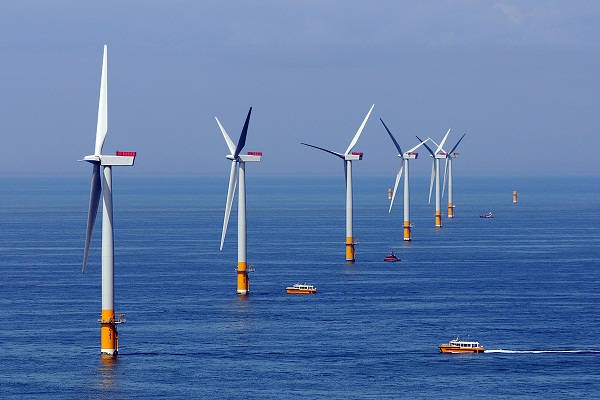Offshore wind energy is a step closer to becoming a reality in Maryland, and climate change activists there couldn’t be happier – unless Congress passed newly proposed federal legislation that would help the cause grow beyond the state.
“We did it!” shouted the headline on the Chesapeake Climate Action Network homepage on Saturday, one day after the Maryland Senate passed a bill that will encourage the development of wind power in the Atlantic Ocean off Ocean City.

The bill [PDF] has been a priority of Gov. Martin O’Malley’s for several years, but hasn’t been able to make it through the legislature. The Maryland House, which has already backed the bill in slightly different form, is expected to send the legislation to O’Malley shortly.
“Future Maryland generations will surely look back at March 8, 2013, as a historic turning point for clean energy in our state,” Mike Tidwell, executive director of CCAN, said in a statement. “The Maryland Senate has put the final touches on the most important clean energy bill the state has ever passed: the Offshore Wind Energy Act of 2013.”
The bill is intended to spur the construction of 200 megawatts of offshore wind power by requiring utilities to buy the power. O’Malley has tried twice before to get offshore wind through the legislature, and relentless lobbying by groups like CCAN and a scaling-down of the legislation – in 2011, O’Malley’s bill was aiming for up to 600 MW – did the trick.
Land-based wind power has flourished in the U.S., with 60 gigawatts of capacity online by the end of 2012, second only to China, but the country has yet to get a turbine installed at sea.
Although more costly to develop, many analysts believe offshore has better long-term potential than land-based wind, offering superior wind resources and fewer conflicts. The United Kingdom has been leading the charge offshore; it brought 854 MW of offshore wind capacity online in 2012, driving its total to 2,093 MW. No other country has yet to reach 1,000 MW.
O’Malley noted that Maryland still has work to do to make offshore happen — “It’s an affirmative step by the Legislature, so it allows us to go out and look for the art of the deal that will get these things built,” he told the Washington Post after the Senate vote.
One thing that might help would be some offshore love from the federal government, and there is a push to make that happen. Sens. Tom Carper (D-Del.) and Susan Collins (R-Maine), and Reps. Bill Pascrell (D-N.J.) and Frank LoBiondo (D-N.J.) have introduced the Incentivizing Offshore Wind Power Act. As it stands now, offshore wind projects that begin construction before the end of this year are eligible for a 30 percent tax credit – which leave a handful of projects, at best, likely to qualify. The proposed legislation would the 3,000 megawatts of offshore wind eligible to applicants, who would then have five years to get their turbines in service in order to make use of the tax credit.